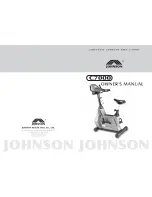
13
7. Riding Safety
The Basics
WARNING
: Many states require specific safety devices. It is your responsibility to
familiarize yourself with the laws of the state where you ride and to comply with all applicable
laws, including properly equipping yourself and your bike as the law requires.
Observe all local bicycle laws and regulations. Observe regulations about licensing of
bicycles, riding on sidewalks, laws regulating bike path and trail use, helmet laws, child
carrier laws, special bicycle traffic laws, and so on. It’s your
responsibility to know and obey the laws.
1. Always wear a cycling helmet that meets the latest certification
standards and is appropriate for the type of riding you do. Always
follow the helmet manufacturer’s instructions for fit, use and care of
your helmet. Most serious bicycle injuries involve head injuries that
might have been avoided if the rider had worn an appropriate
helmet.
WARNING
: Failure to wear a helmet when riding may result
in serious injury or death.
2. Always do the Mechanical Safety Check (Section 5) before you
get on a bike.
3. Be thoroughly familiar with the controls of your bicycle: brakes (Section 8.C.); pedals (Section
8.E.); shifting (Section 8.D.)
4. Be careful to keep body parts and other objects away from the sharp teeth of chain rings, the
moving chain, the turning pedals and cranks, and the spinning wheels of your bicycle.
5. Always wear:
• Shoes that will stay on your feet and will grip the pedals. Never ride barefoot or in sandals.
• Bright, visible clothing that is not so loose that it can be tangled in the bicycle or snagged by objects
at the side of the road or trail.
• Protective eyewear, to protect against airborne dirt, dust and bugs — tinted when the sun is bright,
clear when it’s not.
6. Don’t jump with your bike. Jumping a bike, particularly a BMX or mountain bike, can be fun; but it
can put huge and unpredictable stress on the bicycle and its components. Riders who insist on
jumping their bikes risk serious damage, to their bicycles as well as to themselves. Before you
attempt to jump, do stunt riding or race with your bike, read and understand Section 2.F.
7. Ride at a speed appropriate for conditions. Increased speed means higher risk.
Riding Safety
1. You are sharing the road or the path with others — motorists, pedestrians and other cyclists.
Respect their rights.
2. Ride defensively. Always assume that others do not see you.
3. Look ahead, and be ready to avoid:
• Vehicles slowing or turning, entering the road or your lane ahead of you, or coming up behind you.
• Parked car doors opening.
• Pedestrians stepping out.













































